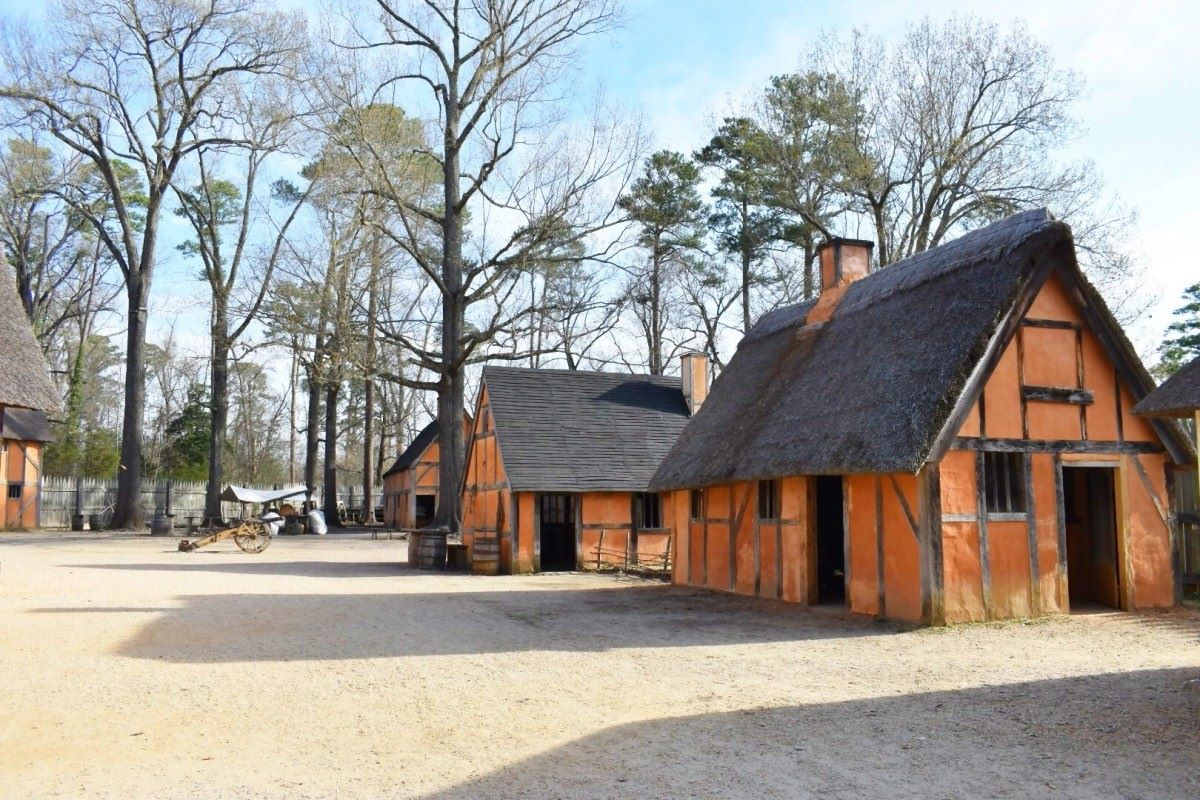
Jamestown, established in 1607, holds the prestigious title of America's first permanent English colony. This historic settlement not only paved the way for future American colonies but also played a pivotal role in shaping the nation's early history. Jamestown's story is a tapestry of adventure, hardship, and resilience, featuring a cast of daring settlers, indigenous peoples, and the untamed wilderness of the New World. From its tumultuous beginnings to its eventual prosperity, Jamestown's legacy is a testament to the enduring spirit of exploration and survival. In this introduction, we'll uncover 20 fascinating facts about Jamestown that highlight its significance in American history and its impact on the cultural and political landscape of the early United States.
Key Takeaways:
- Jamestown, the first English settlement in America, faced hardships but thrived with tobacco, African slaves, and the first legislative assembly, shaping the future of the colony and the United States.
- Today, Jamestown's historic site offers a glimpse into the past, showcasing the resilience of its settlers, the interactions between cultures, and the lasting legacies of key figures.
The Founding of Jamestown
Jamestown holds a significant place in American history as the first permanent English settlement in North America. Let's dive into some fascinating facts about this historic site.
-
Jamestown was founded on May 14, 1607, by the Virginia Company of London. This group of investors aimed to profit from the New World.
-
The settlement was named after King James I of England, who granted the charter for the Virginia Company.
-
Jamestown was strategically located on a peninsula in the James River, chosen for its defensive advantages against potential Spanish attacks.
Early Struggles and Survival
The early years of Jamestown were marked by severe hardships. The settlers faced numerous challenges that tested their resilience.
-
The "Starving Time" during the winter of 1609-1610 saw the population drop from 500 to 60 due to famine and disease.
-
Captain John Smith played a crucial role in the colony's survival by establishing trade relations with the Powhatan Confederacy, a group of Native American tribes.
-
Pocahontas, daughter of Chief Powhatan, is famously known for her association with John Smith and later marrying settler John Rolfe, which helped ease tensions between the settlers and Native Americans.
Economic Development
Jamestown's economy evolved over time, leading to significant developments that shaped the future of the colony.
-
Tobacco became the cash crop that saved Jamestown. John Rolfe introduced a new strain of tobacco in 1612, which became highly profitable.
-
The first African slaves arrived in Jamestown in 1619, marking the beginning of a long and tragic history of slavery in America.
-
The Virginia House of Burgesses, established in 1619, was the first representative legislative assembly in the American colonies.
Cultural and Social Impact
Jamestown's legacy extends beyond its economic contributions. It also had a profound cultural and social impact on the development of the United States.
-
The marriage of Pocahontas and John Rolfe in 1614 symbolized a brief period of peace and cooperation between the settlers and Native Americans.
-
Jamestown served as the capital of the Virginia colony until 1699 when it was moved to Williamsburg.
-
The settlement's archaeological remains provide valuable insights into the early colonial period and the interactions between different cultures.
Modern-Day Jamestown
Today, Jamestown is a historic site that attracts visitors from around the world. It offers a glimpse into the past and the early days of American colonization.
-
Jamestown Rediscovery, an archaeological project started in 1994, has uncovered numerous artifacts and structures from the original settlement.
-
The Jamestown Settlement museum features replicas of the three ships that brought the settlers: the Susan Constant, the Godspeed, and the Discovery.
-
Visitors can explore the reconstructed James Fort, which showcases the living conditions and daily life of the early settlers.
Notable Figures of Jamestown
Several key figures played pivotal roles in the history of Jamestown, leaving lasting legacies.
-
Captain John Smith, known for his leadership and exploration, documented his experiences in Jamestown, providing valuable historical records.
-
John Rolfe's introduction of tobacco cultivation transformed Jamestown's economy and ensured its survival.
-
Pocahontas, through her interactions with the settlers, became a symbol of Native American and English relations.
Legacy of Jamestown
The impact of Jamestown extends far beyond its initial settlement. Its legacy continues to influence American history and culture.
-
Jamestown's establishment marked the beginning of English colonization in North America, paving the way for future settlements.
-
The challenges and triumphs of Jamestown's settlers serve as a testament to human resilience and the pursuit of new opportunities.
A Final Look at Jamestown's Legacy
Jamestown's story is a tapestry of bravery, innovation, and the complex interactions between different cultures. From its establishment in 1607 as the first permanent English settlement in North America, to the struggles and triumphs of its inhabitants, Jamestown laid the groundwork for the future United States. Its legacy is not just in the survival of its settlers but in the rich history and lessons it offers. Understanding Jamestown helps us appreciate the resilience of human spirit and the importance of cooperation, communication, and respect for diverse cultures. As we reflect on Jamestown, let's remember the pivotal role it played in shaping early American history and continue to learn from its stories. Jamestown's past, with all its challenges and achievements, remains a vital chapter in the narrative of human endeavor and progress.
Frequently Asked Questions
Was this page helpful?
Our commitment to delivering trustworthy and engaging content is at the heart of what we do. Each fact on our site is contributed by real users like you, bringing a wealth of diverse insights and information. To ensure the highest standards of accuracy and reliability, our dedicated editors meticulously review each submission. This process guarantees that the facts we share are not only fascinating but also credible. Trust in our commitment to quality and authenticity as you explore and learn with us.


